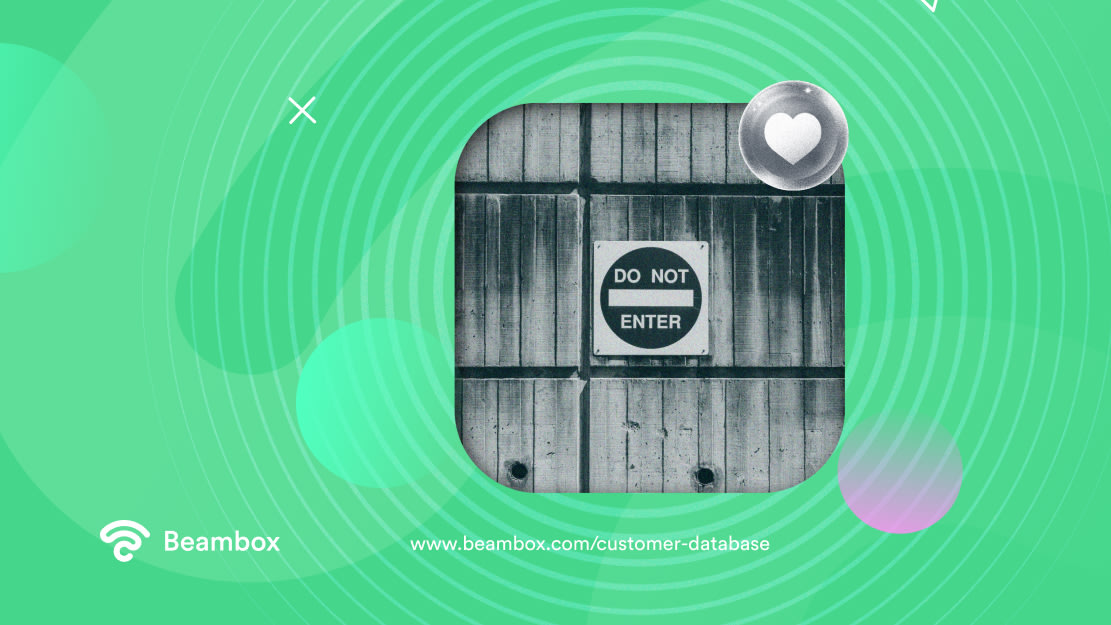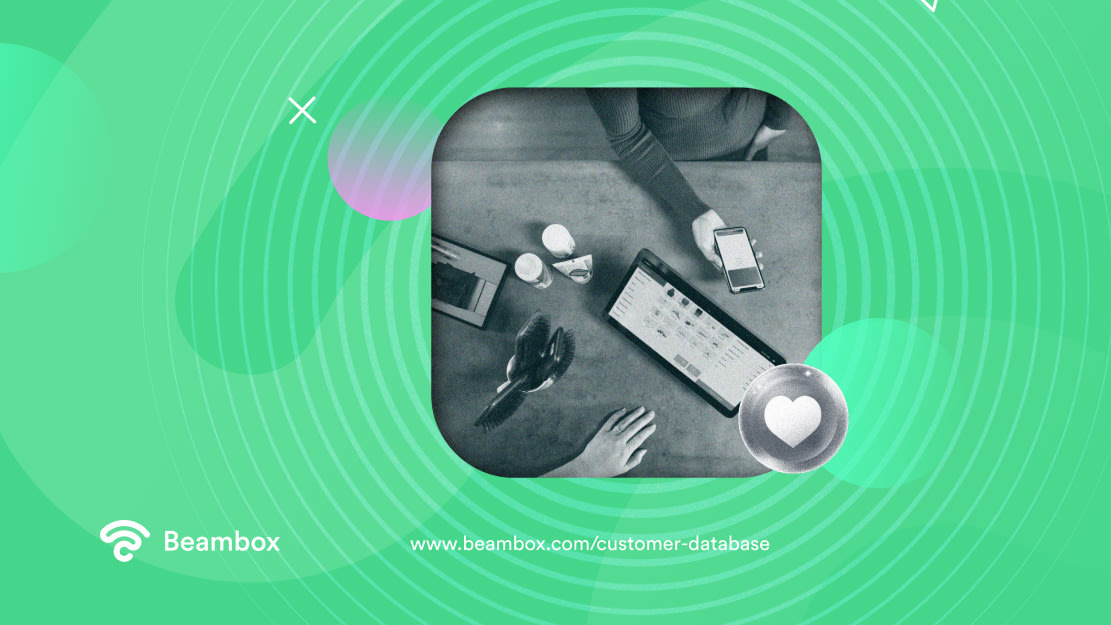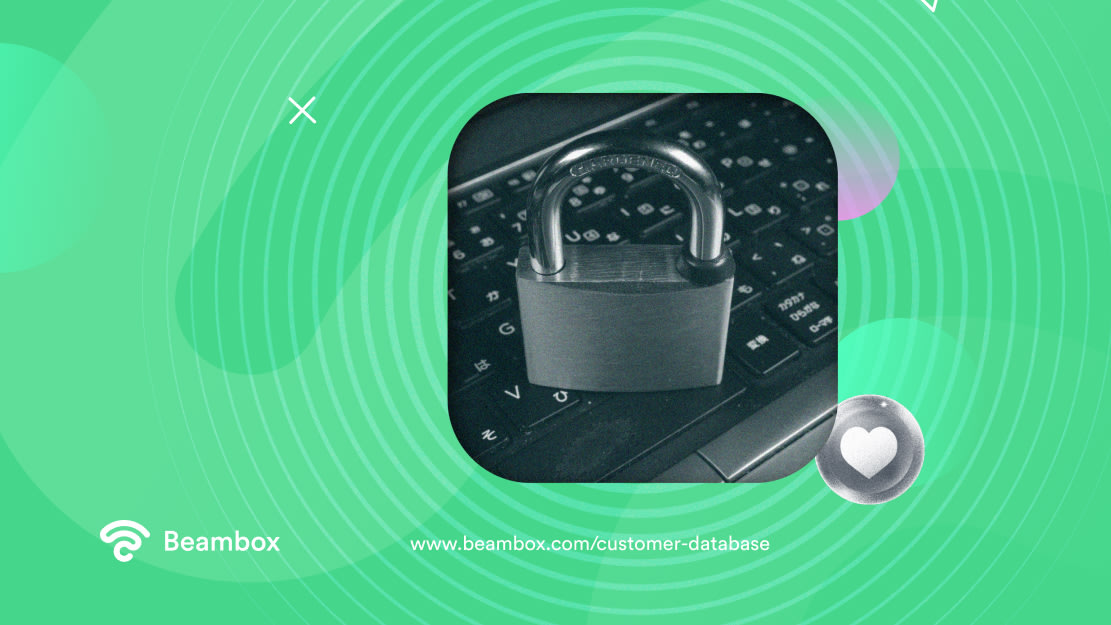Customer Database: What Is It and How To Create One?
Customers have become more demanding nowadays. They need a tailored experience each time they cross paths with you. That’s why a customer database is necessary to thrive in any industry.
By creating it, you’ll have all your customers’ data, including their likes and dislikes, in one place. Using this information, you will be able to give your customers exactly what they want.
Of course, it won’t be easy. You’ll have to do a lot of research and groundwork. But the good news is you don’t have to store all this data manually. There are a lot of software and resources, including this article, to help you along the way.

What Is a Customer Database?
Let’s start this discussion by answering the most basic question, “What is a customer database?” Well, it’s a systematically organized collection of information about your customers, regardless of whether they’re new or old.
What you store in your customer database is completely up to you and your goals. However, some common fields include names, contact details, purchase history, preferences, and any other relevant data.
Now, there are four types of customer databases, and each one stores a different type of data.
Firstly, there’s basic or identity data. As the name suggests, it stores the most basic information about your customers. Some example fields would be name, age, address, gender, race, etc.
This type of customer information makes it easy to create customer profiles. When you know where your business is popular, you can make better marketing decisions.
Secondly, there’s engagement or interaction data. This tells you how well your customers are interacting or engaging with your business.
To create such a database, look at your website visits, social media and ad engagement, bounce rates, conversions, etc. Your customers’ habits and attitudes will become clearer through this data.
Plus, you’ll be able to create better marketing campaigns that appeal to your target audience.
Thirdly, you must store behavioral data that is similar to the previous one but paints a better picture. Abandoned shopping carts, purchase history, product order values, heat maps for clicks and scrolls, etc., all play a part here.
And lastly, you shouldn’t ignore attitudinal data if you want to know your customers at a deeper level. This includes data from reviews, surveys, and live interaction with customers.
Customer opinions and suggestions don’t just help with marketing but also with the overall betterment of your business.
Why Have a Customer Database?
Now that you know the definition and types of customer databases, let’s move on to the why. “Why have a customer database?” is a burning question on many minds when they first start this process.
Part of the reason is the amount of time you need to put into creating accurate customer databases. Then there’s the hassle of managing them. But when you experience the perks it offers, everything will be worth it. What are those perks, you might ask?
Well, the whole point of having a customer data platform is knowing your customers. Imagine the level of customer service you’ll be able to give when you have this information.
You’ll be able to solve your customers’ queries and issues in an instant. Because instead of having to waste your resources on finding the root, you’ll know what happened at a glance.
This will start a snowball effect of good things for your business. Giving great service to your customers will make them loyal to your business.
And it’s no secret that a loyal customer is the biggest asset a business can make for itself. They bring you more sales and revenue, especially if you introduce a loyalty program.
Moreover, customer databases help you make better marketing decisions. Let’s understand this with an example. Suppose one of your customers purchased your new product just two days ago.
Alternatively, you received a request to add the new product feature to the old one a few days back.
Now, it’s obvious that the second customer is more likely to respond to the ad about your new product. So, why waste your time and money showing it to the first one?
But this won’t be possible without consulting your behavioral and attitudinal customer databases.

How To Create a Customer Database?
If you’re still having second thoughts about creating a customer database for your business, here’s a fact to guide you. 66% of customers count on companies to know what they need.
You can’t possibly know what your customers need without analyzing their data, right? And if you don’t do that, you’ll be leaving a lot of money on the table.
But believe it or not, this process isn’t rocket science. With a little effort, you’ll be able to know your target audience in no time. So, here’s how to create a customer database.
Decide What You Want To Store and Where
The first step to creating a customer database is knowing what you want to store and where. When you’re starting, storing the basic information in an Excel sheet would be enough.
That’s because you won’t have that many customers during that time. Therefore, it will be easier to store and manage the data.
But as you start expanding your business, your customer base will also increase. You’ll have access to more data, including people’s opinions about your brand. This is when you’ll have to create more fields and store more extensive data. Refer back to the types of databases to choose what you want to store.
However, it won’t be easy to manage and update this data without a proper system.
So, while you can use Microsoft Excel at the very start, it’s a good idea to plan for the future. This way, you won’t have to revisit your strategy every time your business expands.
Now, you don’t have to reinvent the wheel. There are various templates and software systems that you can use to store your data.
But remember, handling databases is no joke. One wrong move, and you’ll find yourself storing the wrong information. Plus, that’s not an easy thing to detect!
Hence, be ready to give some training to the database manager. Choosing software that’s easy to use will make this task easier.
Moreover, customer intelligence platforms should let you customize database templates. This is important because each business is different. You might need more fields than are available in the template. Or you might not need that many and end up wasting your money.
And lastly, choose software that allows you to automate sales tasks and workflows.

Make Rules on How To Use Your Database
It’s time to set some ground rules once you’ve decided what to store and where.
You won’t fill these databases just once and then never look back at them. Your sales team will view it time and again to make marketing decisions.
Plus, customers won’t stay forever, and new ones will come on a regular basis. So, your databases will require constant updates. You’ll obviously appoint someone for this. Apart from them and other authorized people, nobody should be able to make unwanted changes.
Besides, customer data is sensitive. The wrong person might end up selling your customers’ data and get you in legal trouble.
To avoid this, set permissions and roles. Decide who can make changes and who can only view the database.
It’s also a good idea to protect your customer databases with a strong password. After that, create a README file or a document to let people know how to use your database.
This file should include a description of each column you’ve added. This will make it easier for your team to add the data.
Additionally, mention the names or links of all the related files, including versions, so everything’s in one place. This will make it easier to manage the database when the data becomes extensive.
Lastly, add the rights and permissions you decided on earlier. This data will help you find the culprit in case of any mishaps.

Collect Customer Data
How you collect customer data to add to the fields you just created is up to you. But don’t forget to combine various sources. Most business owners make this mistake, so don’t end up in their shoes.
Start by conducting surveys since they are the most effective in getting the whole picture. They don’t just help you store people’s names and email addresses. They also help you understand and connect with your customers.
You might ask them to fill out a short form when they visit your establishment. Or you might display a form when they’re leaving your website.
It doesn’t matter whether these surveys are live or online. The main goal is to get the information.
However, not everyone is willing to fill out forms for you. So, combine this source with WiFi marketing, email newsletters, and blog subscriptions.
The problem is people won’t subscribe to these for nothing. So, when you’re first starting customer data collection, you have to give some value in return. This might be a small incentive or information.
Moreover, you can bring chatbots to your aid. They can interact with your website visitors and solve their issues through artificial intelligence. Customers will easily give their names and emails in exchange for instant answers.
Then, social media and website analytics. Use these tools to know how many customers interact with your business and how. This will paint a clear picture of how successful your online presence is.
And lastly, turn to customer purchase and transaction history, especially if you take online orders.
Segment Your Customers
The database you create won’t have just one type of customer. There’s a whole sales pipeline that customers go through when making a buying decision.
But it’s not a good idea to only store information of those who reach the finish line. You must know each customer, whether they’ve made a purchase yet or not.
Besides, the core idea is to find customer data easily when you need it. That won’t be possible if you don’t segment customers since the database contains so much information. So, here’s what you need to do.
Firstly, add tags for the type of customers. Some examples would be regulars, discount lovers, passers-by, average, and explorers.
This filter will be especially handy when creating marketing campaigns for different stages of the sales funnel.
Secondly, create filters about demographics like age, gender, race, etc. It would also be a good idea to segment customers according to their preferences.
With these filters, you won’t have to spend a lot of time manually sorting through the fields. Almost all client database software allows you to add such filters. But if yours doesn’t, it might be time to make a change.
Don’t Forget To Make It Secure
After creating fields, collecting customer data, and adding filters, it’s time to optimize your database.
The information you’ve stored is already quite extensive. You wouldn’t want to increase your workload by dealing with data redundancy. This is when you have more than one instance of the same information inside your database.
Another issue businesses face when they haven’t optimized their databases is outdated data. For instance, if a customer has moved to your competitor, there’s no use keeping their information.
Therefore, you must have ways to clean data. Again, most software systems allow this, so use it to your advantage.
Moreover, plan on using APIs or hiring programmers to help you merge different datasets. This is especially helpful when you’re collecting data from various tools like CRM databases, email automation, etc.
As mentioned earlier, customer data is sensitive. While permissions and passwords will help keep them safe, you must take other precautions as well.
Start by letting customers know you’re collecting their data. Ask for their consent to store this information as well as send them promotions.
Additionally, mention why you’re collecting this data and how you’ll use it. It’s also a good idea to make customers accept your terms. This will help you avoid legal complications.
And while this might seem counterintuitive, you shouldn’t collect more data than you need. This will only increase your hassle of keeping customer data secure.
You must also use data protection software and keep it updated. If you’re using WiFi marketing solutions to collect data, use a separate guest network to keep the main network safe. And lastly, comply with regional data protection regulations.

Use Customer Database Software To Store Data Easily
That might seem like a lot of information to digest. But the good news is you don’t have to do all these tasks manually. As mentioned earlier, there are a lot of software systems to help you create client databases.
When you’re just starting, you might hesitate to invest in expensive systems, and that’s completely understandable. Even then, you have some free options that work just fine.
Bitrix24 is one of the best options in this regard. And the best part is that it comes with unlimited users, which is rare with free systems. Then there’s Hubspot Sales Hub, which makes it really easy to collect and work on customer insights.
Moreover, you can consider Monday.com and Freshsales as well for free customer database software.
Remember, these systems will have limited features, and you might not be able to do a lot. For example, the free version of HubSpot CRM only allows five documents per user and five email templates monthly.
On the bright side, you can usually test paid systems with a free trial before making a decision.
Firstly, you can invest in Zendesk, which is quite reasonable compared to other detailed software. It helps you integrate channels to view data in a single place easily. Plus, you can automate your workflows to reduce the burden. It also offers a 14-day free trial to let you test the waters.
Secondly, there’s ClickUp, which might be on the more expensive side of the scale, but it’s the most elaborate one.
You can even manage your team with an integrated chat and comment system. For more options, consider Zoho, Pipedrive, Salesforce, or Airtable.
Leverage Customer Data To Boost Your Sales
Building a customer database is not as hard as it sounds. All you need is the right tools and knowledge, which you probably have by now.
The first step is to decide what you want to store and where. Once you’ve done that, set rules and permissions before collecting customer data. Lastly, combine data from various sources.
If you want to collect data easily and have simplified reports and insight, try out Beambox WiFi and email marketing. With it, you will collect data anytime your customers connect to your WiF, which can supercharge your email strategy. Plus, you can run campaigns on autopilot and grow your online reputation easily. Do you want to try it? Start your free trial now!
Get Started With Free WiFi Marketing
Beambox helps businesses like yours grow with data capture, marketing automation and reputation management.
Sign up for 30 days free


